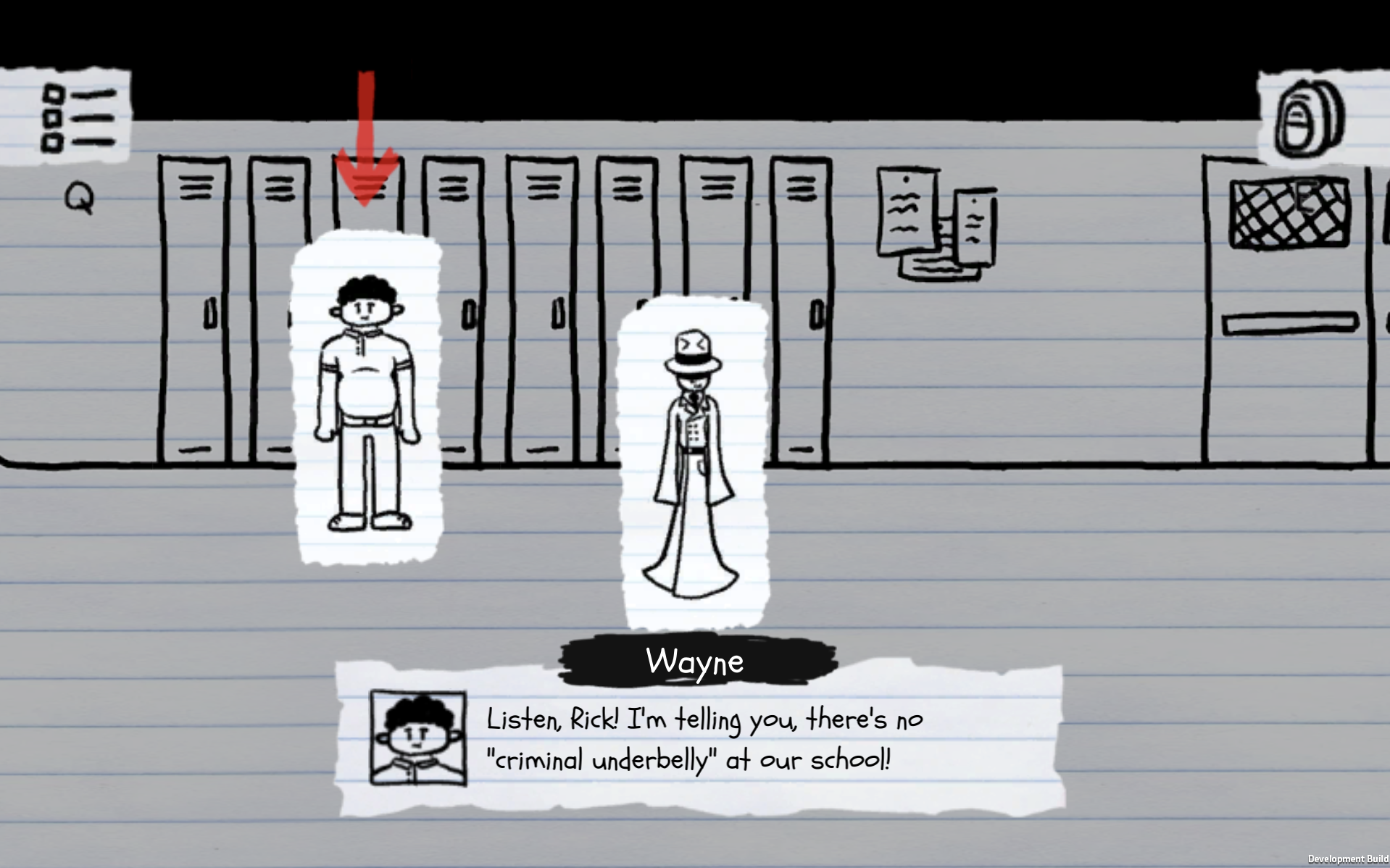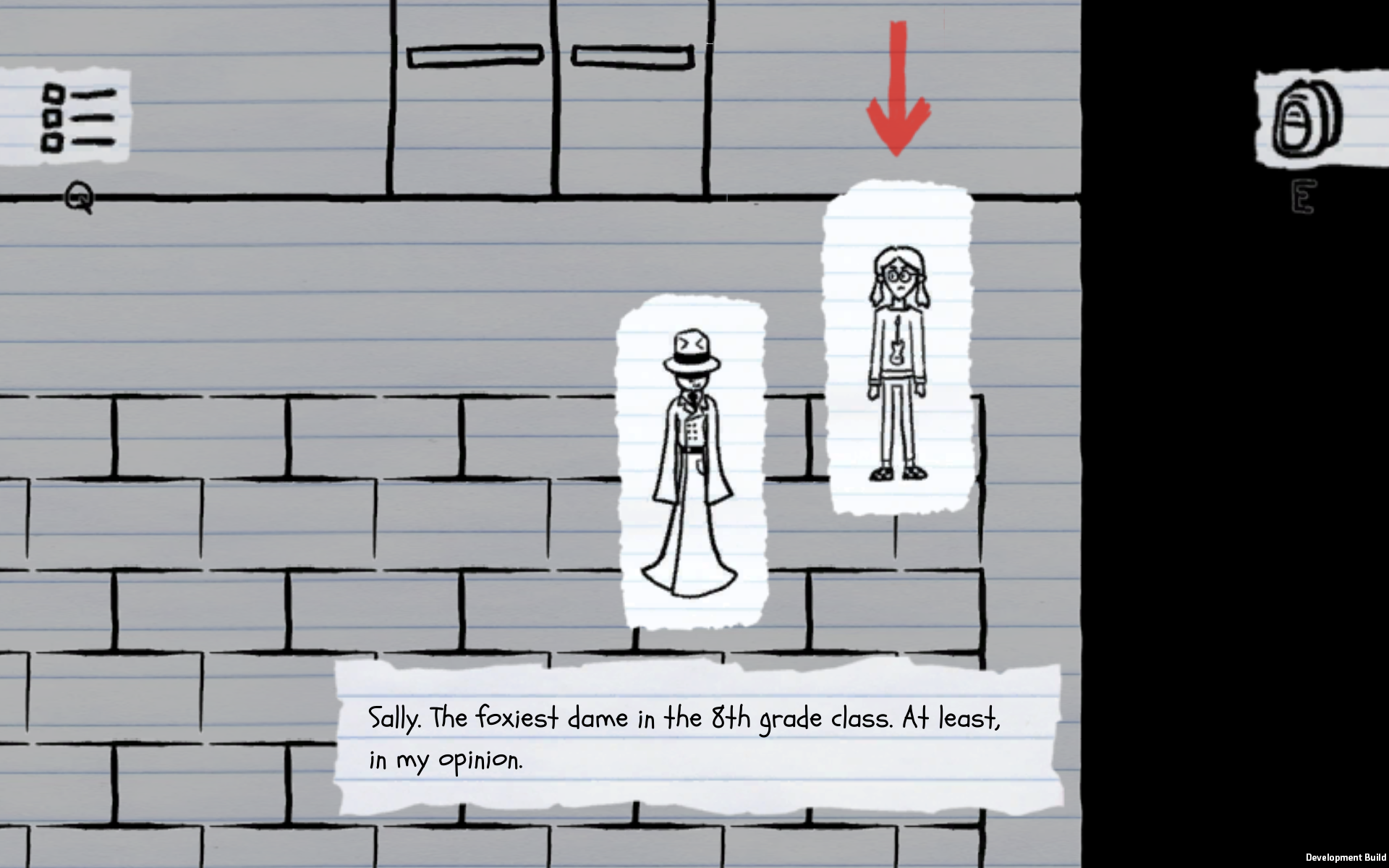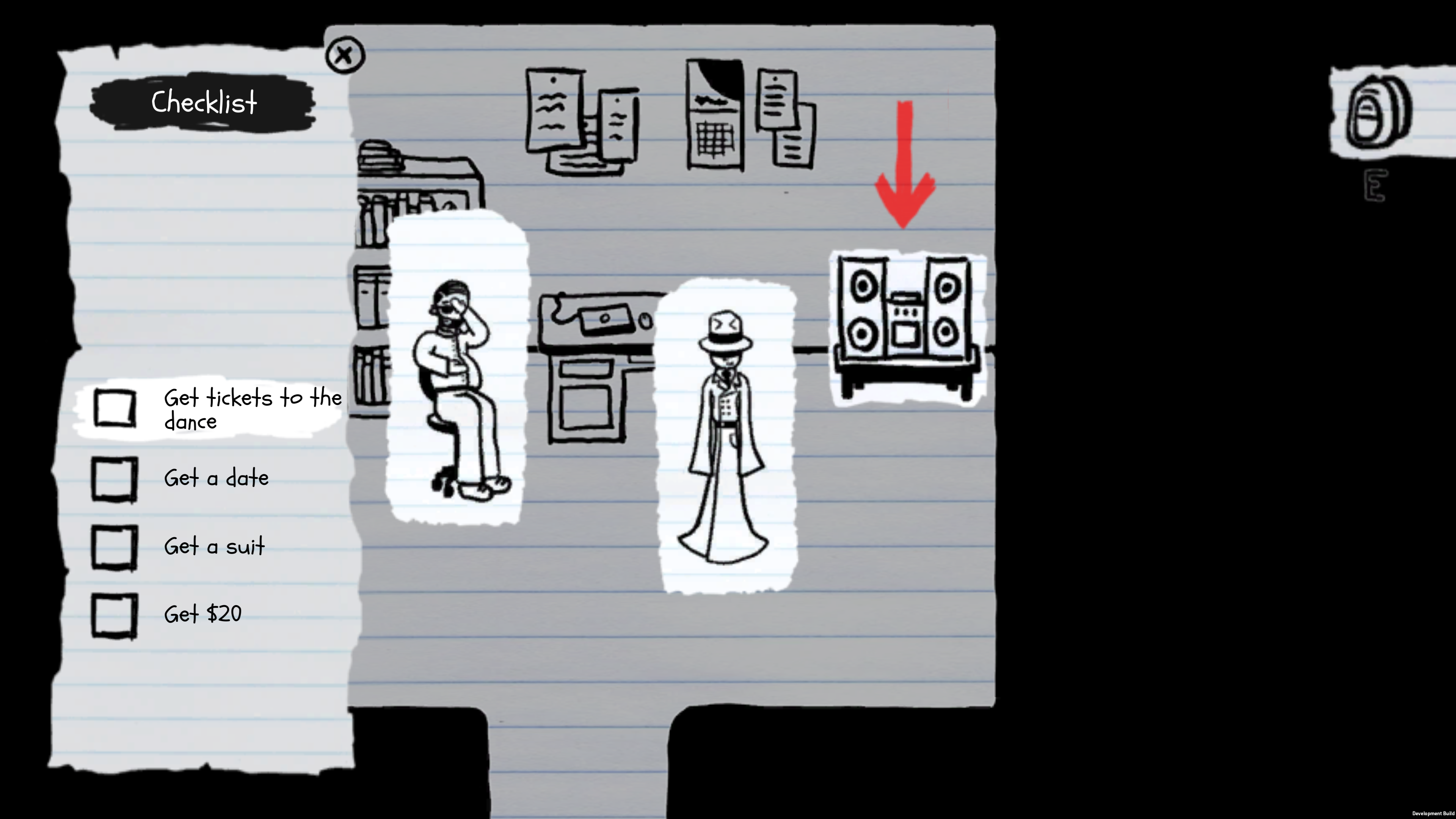





RICK SWIGGINS, 6TH GRADE SLEUTH
Designed and created by Dwight DavisItch.io Page
Full Design Documentation
OVERVIEW
In this narrative-focused adventure game, play as the delusional Rick Swiggins, a 6th grader who's convinced that there’s an illicit deal going down at the 8th grade dance, and he’s the only one who can stop it! Talk to quirky characters and solve puzzles in order to break your way into the dance and bust some criminals (or find out that you go to a normal school and nothing was really going on in the first place).
DETAILS
- Team: Dwight Davis (solo developer)
- Genre: Adventure
- Development Timeline: Sept 13-27, 2021 (made for the $104 Adventure Game Challenge)
- Software: Unity (engine), Adobe Photoshop (art), FL Studio (music & sound), Google Docs (planning)
GAME MECHANICS
ControlsPlayers navigate by pressing WASD to control Rick. When Rick is nearby an object of interest, a large red arrow points down at it, indicating that Rick can press Space to interact with it. Pressing space opens a lower-third dialogue menu where Rick either comments on an object or talks with a character.
Checklist
Pressing Q opens up a checklist which logs your current progress and objectives. Talking to certain characters will result in new items being added to the checklist as Rick learns about new tasks he needs to perform.
Inventory and Items
Pressing E opens up the inventory, which holds all the items you pick up. Rick gains items by talking with people and interacting with objects. While standing nearby an object of interest, you can select an item from the inventory and click space to “use” the item on that object or person. If that object or person has a connection to the item, this interaction will spark a new line of dialogue, allowing the player to progress towards their goals.
Puzzles
Puzzles generally involve finding the correct items and using them in the correct places. The game’s puzzles are intentionally quite simple, since this was designed as a narrative-focused game instead of a hardcore puzzle adventure.
CORE GAME LOOP
- The player explores a new area and interacts with objects of interest in its vicinity.
-
After reading through dialogue, the player either receives an item or is given a hint on what item or interaction they need to find in order to unlock further dialogue.
- The player sets off to find the necessary item or interaction. Their pursuit either leads them to a previously-explored area or to a new area, restarting the core loop.
POSTMORTEM
The Good- Narrative — I feel very proud of how I executed this game’s silly narrative. Since it’s release, I’ve received consistent positive feedback regarding the game’s story.
- Humor — I was humbled to see playtesters and streamers laugh out loud playing this game. It’s rare that I look back at a project I wrote and still find it funny years later, but Rick Swiggins still makes me chuckle to this day.
- Checklist — It’s easy to lose track of minute subquests when playing an adventure game. I implemented the checklist menu to help players stay on track and avoid getting stuck due to forgotten details. I’m really happy with how easily players can orient themselves using this menu.
The Bad
- Map Scale — The map is slightly too large compared to Rick’s walking speed, meaning that it takes longer than it should to get around. Especially when backtracking is involved, it feels painful to slowly travel across needlessly-long, empty hallways.
- Unclear Inventory Interactions — For certain dialogue trees, if you obtain a certain item before ever talking to its corresponding NPC, the game won’t make it clear that this particular item has been acknowledged or used. For example, Wayne might sing some edgy emo song lyrics without he or Rick acknowledging that these lyrics came from Liam’s poem, which is sitting in Rick’s inventory. If I were to remake this game, I would try and eliminate small, confusing moments like this by clearly telegraphing all inventory interactions via dialogue.
- Puzzle Variety — This game was intentionally designed to have simple puzzles. However, the vast majority of this game’s puzzles follow the exact same structure. If I were to revisit development, I would create or rework puzzles which defied the usual pattern of “find an item and bring it to the right place.”
Summary
This game succeeds in its biggest areas of focus: narrative and humor. However, with limited time and energy spent on writing and quest logic, there are certain interactions which can come off a bit confusing. Furthermore, map traversal is a bit sluggish, and the puzzles lack significant variety. However, for a short adventure game experience, this game provides clear structure and lots of chuckle-worthy moments.